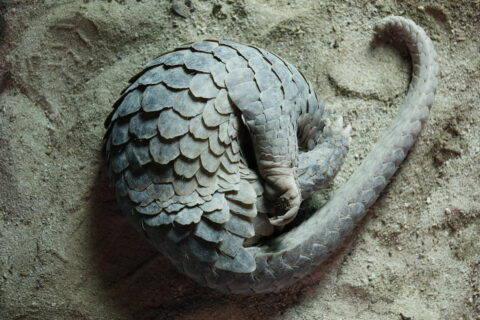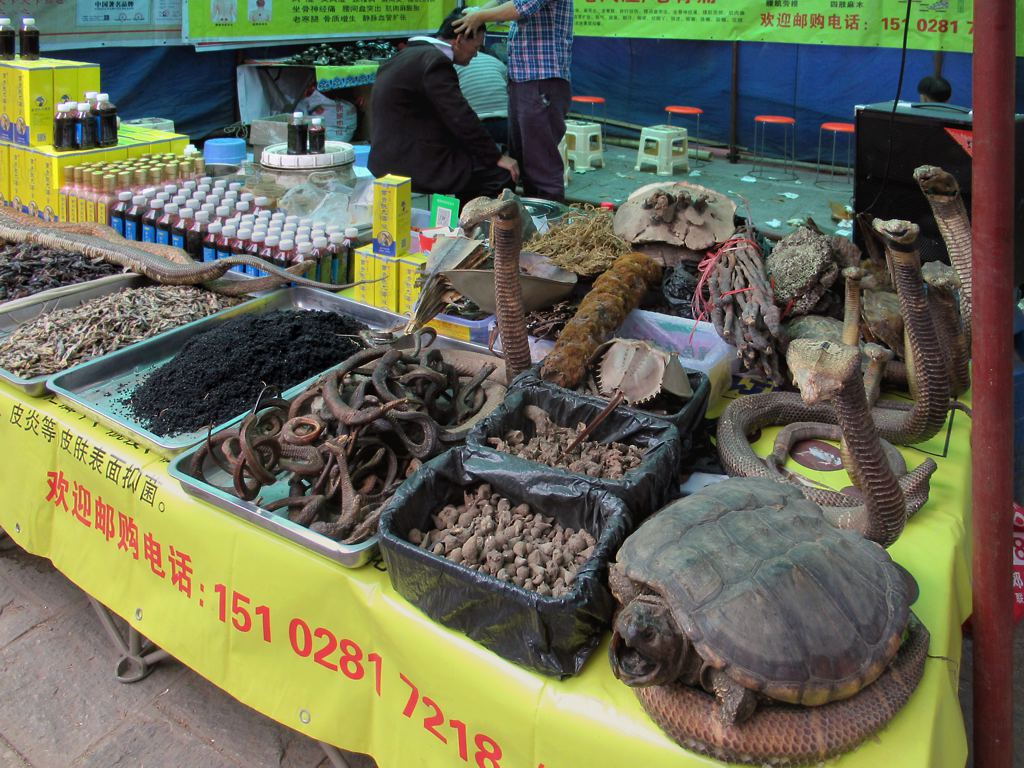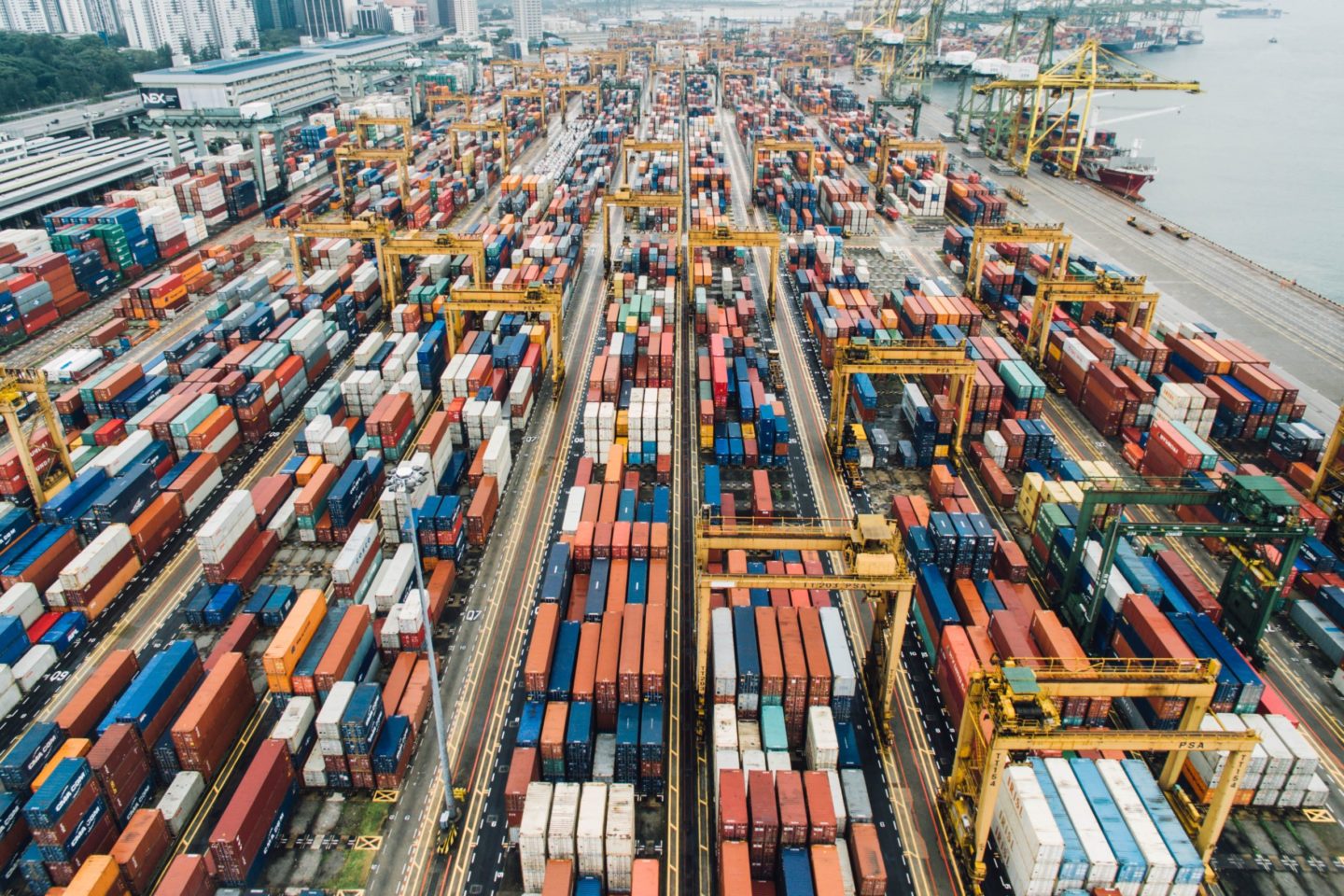Explainer
What Is Ultra-Processed Food and Why Is It Unhealthy?
Diet•7 min read
Perspective
Pangolins are the most trafficked mammal on earth, sold for their meat and scales in wildlife markets around the world. The quirky, anteater-like animal is now at the center of the COVID-19 crisis.


Words by Alaine Johnson
Singapore’s MacRitchie Reservoir is one of the only places in the country to be completely isolated in the rainforest, away from the urban jungle. On a midnight trek recently, my companion and I trudged through muddy trails in pitch-black darkness with only headlamps to guide us. Without warning, my friend grabbed my arm and pointed, claiming that he had seen an anteater. I leaned forward to shine my headlamp into the bush and saw only a few scales rustle and disappear. It’s a snake, I started to say. I caught myself. The sole creature in Singapore that looks like an anteater with scales is the pangolin.
This scaled, quirky, anteater-like animal is now in the limelight as a potential source of COVID-19. In a smuggled pangolin, researchers found a 90-99 percent genetic match with the virus—a range high enough to warrant further research, but also large enough to cast doubt that the pangolin was a carrier of COVID-19. Pangolins are the world’s most trafficked mammal, according to the Wildlife Justice Commission, with upwards of a million individuals traded in the last decade. Every species of pangolin, from Africa to Asia, ranges from threatened to critically endangered. Trafficking pangolins was illegal in China even before the COVID-19 outbreak, after which the country passed a comprehensive ban on the sale and consumption of wild animals. Bans on the sale of pangolins were in place in China for years prior, but weak regulations and lax enforcement meant that pangolins were still commercially available in the markets of major cities like Wuhan, where the virus originated.

Pangolins are vulnerable to poaching because they have no natural defense mechanisms against humans. When threatened, pangolins roll into a ball to protect themselves with their scales. Humans can easily pick up these scaly balls, making the pangolin a low-risk and lucrative choice of animal to poach. Unabated demand for pangolins’ scales and meat keeps the illegal supply of these creatures flowing around the world. Nobody knows how many pangolins are illegally traded every year, but the number far exceeds the hundreds of thousands seized in wildlife trade busts. Poachers target pangolins based on consumer demand for their scales, which are believed to possess healing properties in folk medicines, and their meat, a delicacy in Vietnam and China. Pangolins’ scales are even used for hangover remedies in Vietnam.
China’s wildlife laws, enacted in 1989, promoted the wildlife trade, allowed the consumption of wild animals and permitted captive breeding. With the ban passed in February, the consumption and sale of wild animals for food is now prohibited. Although China is only now making retroactive moves to shut down its wildlife trade, other transit hubs and points of origin, like Nigeria—a country linked to 55 percent of the illegal pangolin scales seized in recent years—have yet to take firm action to prevent the illegal capture and trade of wildlife. A 2016 international treaty, which includes the signatures of 182 governments, only takes a stance on ending the legal trade of pangolins. Curbing the illegal wildlife trade with rigorous surveillance at all nexuses is imperative for animal protection and the prevention of future pandemics.
Pangolins are smuggled into China and Vietnam from only a few countries. Singapore is one of the most active hubs for the illegal trade of many wildlife species, pangolins included. Last year, at a shipping port in Singapore, authorities detained a shipment of 12.9 tons of pangolin scales from Nigeria destined for Vietnam. These scales, worth roughly $52.3 million, were hidden inside a shipping container behind frozen beef, along with 177 kilograms of elephant ivory. Wildlife experts estimate that 17,000 pangolins were slaughtered for that quantity of scales.
The native population of pangolins within Singapore is equally at risk as those already in transit; the pangolin I encountered during the night trek is vulnerable to both road traffic accidents and poaching. Locations of injured pangolins in Singapore’s reserves are undisclosed by conservationists to protect these vulnerable creatures. The operations of the illegal wildlife trade equally implicate intermediary countries like Singapore, which also play a role in the prohibited sales and movement of thousands of other wild species. For every container of pangolin scales that is examined and seized in Singapore, how many more slip through, undetected?

The monetary losses of shutting down wildlife trade, illegal or otherwise, simply pale in comparison to the losses from this pandemic, in terms of both economic value and human lives. The illegal wildlife trade—worth an estimated $8.7–22.8 billion—is alleged to be the fourth largest criminal area by dollar amount in the world, after illegal drugs, counterfeit currencies, and human trafficking. The global trade of wild animals produces a festering ground for diseases because it causes different types of wildlife come into close contact with each other, with farmed animals, and with humans. One of the first clusters of the COVID-19 outbreak, a wet market in Wuhan, China, sold over a hundred species of wildlife in close quarters.
The illegal wildlife trade is proven to increase public health risks and jeopardize animal welfare. The current pandemic stems from a zoonosis—a disease that can be transmitted from other animals to human animals. COVID-19, bird flu, Ebola, HIV, swine flu, rabies, and Spanish influenza are all examples of zoonoses. Over 70 percent of zoonoses typically come from wildlife, and the rest, such as swine flu or rabies, originate in domesticated species. When an outbreak occurs, the entire animal species that “caused” the outbreak suffers. For example, SARS (Severe Acute Respiratory Syndrome) was allegedly a zoonosis stemming from a civet cat. The spread of SARS resulted in the culling of thousands of civets in China. Many animals, including livestock and wild animals, have already been killed in China due to fears and misinformation that the virus can pass to humans from these “suspected” species. Humans’ exploitation of animals, wildlife and farmed species alike, dramatically increases our species’ exposure to viruses and organisms, some of which can be deadly. Humans’ unfortunate, and deeply ironic, response too often is to “cull” animals of certain “suspect” species, causing many innocent creatures to perish unnecessarily.
The precise origins of COVID-19 are still highly contested; conclusive evidence does not yet exist proving that bats or pangolins transmitted the virus to humans, or that Patient Zero was even exposed to one. Bats, vital to many ecosystems, and the threatened pangolin, will likely nonetheless pay a high price just for being suspected of causing this pandemic. A Chinese researcher writes in a recent letter to Science magazine, “Unfortunately, the suggestion that COVID-19 may have originated in bats is putting them at increased risk…The reputation of bats as virus carriers has even led to extreme suggestions of mass slaughter to protect public health.”
Along with its precise source, the virulence of COVID-19 is not yet fully understood. According to a paper published in the medical journal Intervirology, knowledge, and understanding of such zoonoses and pathogens in the non-human (animal) hosts we know of are limited. The COVID-19 “infodemic”—defined by the World Health Organization (WHO) as “an overabundance of information—some accurate and some not—that makes it hard for people to find trustworthy sources and reliable guidance when they need it”—could be devastating for the various species being tentatively blamed.
The animals suspected of transmitting disease suffer doubly at our hands; first, they’re exploited through illegal trafficking, and secondly culled for being suspected of carrying a disease that endangers humans. The current pandemic has thus far led to a plummet in the sale of pangolins in places like Gabon, but now the pangolin runs the risk of being culled. The propagation of zoonoses exposes humans’ mistreatment of wildlife, domesticated species, and the natural world; we create these predicaments by being closely proximate to animals that should not be captured, kept in captivity, or otherwise forced to be near us. Blaming China for the proliferation of a “foreign, Chinese” coronavirus is one-dimensional at best, and deeply prejudiced at worst. The potential for this pandemic began the moment that wild animals were captured in Gabon or Nigeria, long before they ever entered that wet market in Wuhan. This pandemic originated by humans exploiting animals for selfish gains; only now have the long-overdue consequences finally become tangible.
To avoid the next pandemic, we need to unequivocally address the illegal wildlife trade. The illegal wildlife trade is robust and continues at-large despite the global public health crisis. While the demand for wildlife products persists, the forceful limitation of humans’ exposure to wild animals is necessary. Looking ahead, it’s important to note that China’s ban on wildlife trade and consumption may not be as comprehensive in practice as it seems. Similar bans were passed after the SARS outbreak, but the wildlife trade quickly bounced back, and bans were repealed. Should the legal wildlife trade resurface, as it has in the past, enforced and improved hygiene and sanitation practices are needed along the whole supply chain. Like most of the world, the wildlife trade is also conducted online. E-commerce platforms need to be closely monitored for the sale of illegal wildlife, despite insufficient international regulations specifying jurisdictional liability of online shopping sites. Licensing loopholes abound and need to be closed. China’s licensing system permitted the breeding of wild animals, a practice that too often leads to the laundering of wild-caught animals through the legal, licensed market.
Countries around the world are releasing hefty stimulus packages to boost the health of their economies. These same countries need to offer holistic packages to stimulate human, animal, and environmental health, perhaps by following the WHO’s One Health approach, which incorporates the needs of multiple constituencies—humans, animals, plants, and the natural environment. During this economic slowdown, images of natural places around the world achieving restored environmental balance have gone viral; the air pollution over China nearly vanished in February and the waters of Venice are clear (although not clean) for the first time in years. Such images are tangible, undeniable proof that ceasing harmful human activities is sufficient to change the environmental status quo. We are glimpsing a possible alternate future, but only if meaningful change is permitted to occur and “business as usual” is significantly reconstituted. The planet has this moment to breathe, but cannot entirely heal unless harmful anthropogenic pollution is dramatically and permanently reduced.
Many more people may perish before the pandemic proportions of the coronavirus fade away. The demand for pangolins is unfortunately unlikely to dissipate in the same way. Just as the way the climate crisis is primarily driven by a handful of large corporations and governments, the demand for pangolins is primarily driven by the desire of the powerful and wealthy to possess and consume exotic contraband. The spread of the virus is testing each country’s ability to react and flatten the curve—countries implicated in the wildlife trade likewise need a rigorous check on how they are reacting to the connection between smuggled pangolins and COVID-19. Stopping the illegal wildlife trade and regulating legal channels of trade go hand-in-hand with conserving biodiversity and keeping wild animals where they should be: in the wild. Animals living freely in the wild contribute to robust ecosystems, and at a safe distance where their viruses are not likely to infect human populations. Ending the exploitation of animals safeguards human health. It’s time to socially distance ourselves from wild animals, for both our wellbeing and theirs.